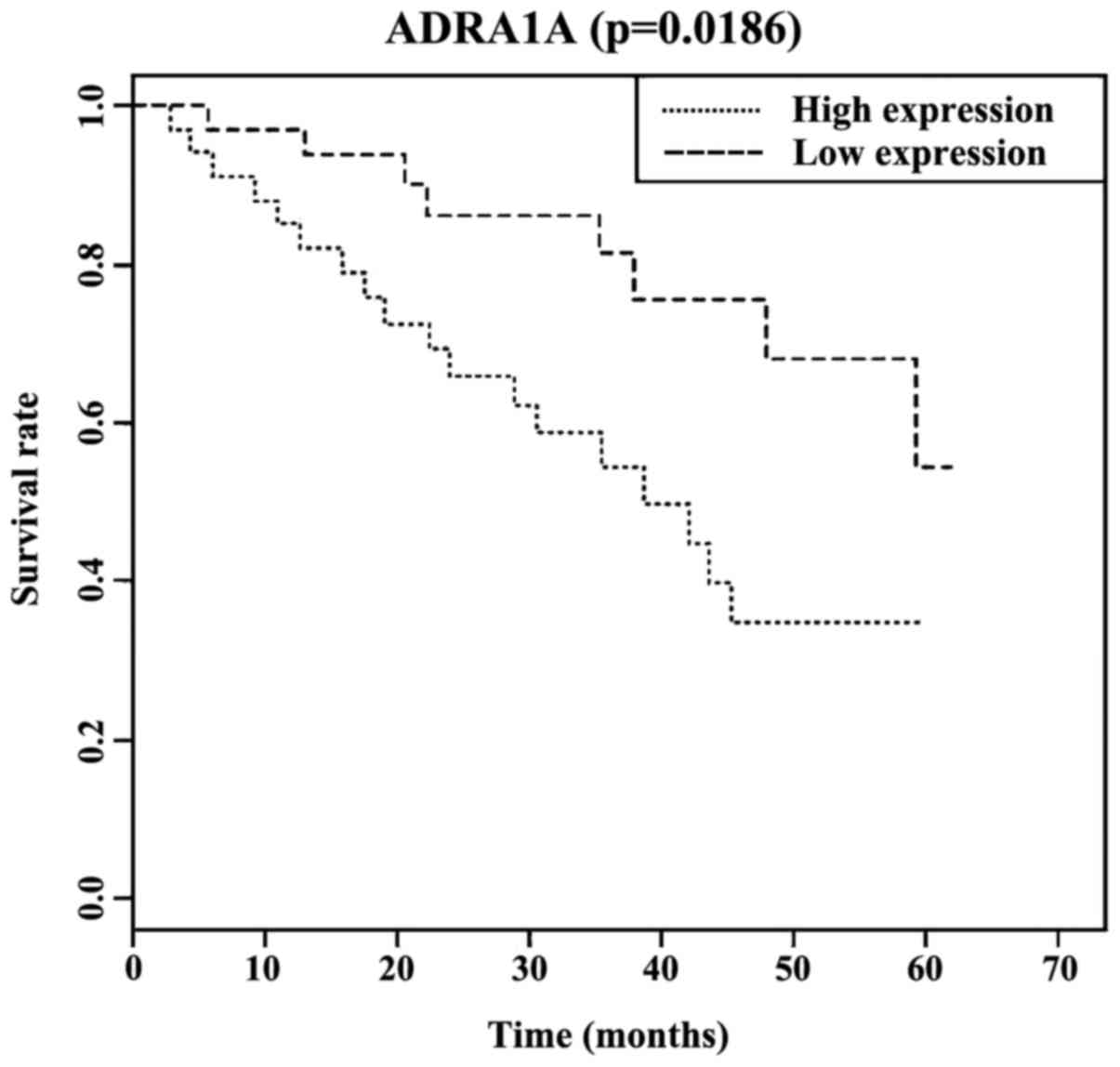|
1
|
Fei R, Chen J and Du P: The expression of
miR-574-5p in cervical cancer tissue and its downregulation
influence on cervical cancer SiHa cell. Basic Clin Med. 35:458–462.
2015.
|
|
2
|
Berridge MJ, Bootman MD and Roderick HL:
Calcium signalling: Dynamics, homeostasis and remodelling. Nat Rev
Mol Cell Biol. 4:517–529. 2003. View
Article : Google Scholar : PubMed/NCBI
|
|
3
|
Zong S, Wang X, Yang Y, Wu W, Li H, Ma Y,
Lin W, Sun T, Huang Y, Xie Z, et al: The use of cisplatin-loaded
mucoadhesive nanofibers for local chemotherapy of cervical cancers
in mice. Eur J Pharm Biopharm. 93:127–135. 2015. View Article : Google Scholar : PubMed/NCBI
|
|
4
|
Shazly SA, Murad MH, Dowdy SC, Gostout BS
and Famuyide AO: Robotic radical hysterectomy in early stage
cervical cancer: A systematicreview and meta-analysis. Gynecol
Oncol. 138:457–471. 2015.https://doi.org/10.1016/j.ygyno.2015.06.009
View Article : Google Scholar : PubMed/NCBI
|
|
5
|
Belhadj H, Rasanathan JJ, Denny L and
Broutet N: Sexual and reproductive health and HIV services:
Integrating HIV/AIDS and cervical cancer prevention and control.
Int J Gynaecol Obstet. 121 Suppl 1:S29–S34. 2013. View Article : Google Scholar : PubMed/NCBI
|
|
6
|
Mabeya H, Khozaim K, Liu T, Orango O,
Chumba D, Pisharodi L, Carter J and Cu-Uvin S: Comparison of
conventional cervical cytology versus visual inspection with acetic
acid among human immunodeficiency virus-infected women in Western
Kenya. J Low Genit Tract Dis. 16:92–97. 2012.7. View Article : Google Scholar : PubMed/NCBI
|
|
7
|
Mwanahamuntu MH, Sahasrabuddhe VV,
Pfaendler KS, Mudenda V, Hicks ML, Vermund SH, Stringer JS and
Parham GP: Implementation of ‘see-and-treat’ cervical cancer
prevention services linked to HIV care in Zambia. AIDS. 23:N1–N5.
2009. View Article : Google Scholar : PubMed/NCBI
|
|
8
|
Byrd TL, Peterson SK, Chavez R and Heckert
A: Cervical cancer screening beliefs among young Hispanic women.
Prev Med. 38:192–197. 2004. View Article : Google Scholar : PubMed/NCBI
|
|
9
|
Loo SK, Fisher SE, Francks C, Ogdie MN,
MacPhie IL, Yang M, McCracken JT, McGough JJ, Nelson SF, Monaco AP,
et al: Genome-wide scan of reading ability in affected sibling
pairs with attention-deficit/hyperactivity disorder: Unique and
shared genetic effects. Mol Psychiatry. 9:485–493. 2004. View Article : Google Scholar : PubMed/NCBI
|
|
10
|
Cole SW and Sood AK: Molecular pathways:
Beta-adrenergic signaling in cancer. Clin Cancer Res. 18:1201–1206.
2012. View Article : Google Scholar : PubMed/NCBI
|
|
11
|
Fitzgerald PJ: Beta blockers,
norepinephrine, and cancer: An epidemiological viewpoint. Clin
Epidemiol. 4:151–156. 2012. View Article : Google Scholar : PubMed/NCBI
|
|
12
|
Fitzgerald PJ: Is norepinephrine an
etiological factor in some types of cancer? Int J Cancer.
124:257–263. 2009. View Article : Google Scholar : PubMed/NCBI
|
|
13
|
Freitas SR, Pereira AC, Floriano MS, Mill
JG and Krieger JE: Association of alpha1a-adrenergic receptor
polymorphism and blood pressure phenotypes in the Brazilian
population. BMC Cardiovasc Disord. 8:402008. View Article : Google Scholar : PubMed/NCBI
|
|
14
|
Liu YR, Loh EW, Lan TH, Chen SF, Yu YH,
Chang YH, Huang CJ, Hu TM, Lin KM, Yao YT, et al: ADRA1A gene is
associated with BMI in chronic schizophrenia patients exposed to
antipsychotics. Pharmacogenomics J. 10:30–39. 2010. View Article : Google Scholar : PubMed/NCBI
|
|
15
|
Higgins JR and Gosling JA: Studies on the
structure and intrinsic innervation of the normal human prostate.
Prostate Suppl. 2(S2): 5–16. 1989. View Article : Google Scholar : PubMed/NCBI
|
|
16
|
Chapple CR, Burt RP, Andersson PO,
Greengrass P, Wyllie M and Marshall I: Alpha 1-adrenoceptor
subtypes in the human prostate. Br J Urol. 74:585–589. 1994.
View Article : Google Scholar : PubMed/NCBI
|
|
17
|
He L and Huang C: MiR-19b and miR-16
cooperatively signaling target the regulator ADRA1A in Hypertensive
heart disease. Biomed Pharmacother. 91:1178–1183. 2017. View Article : Google Scholar : PubMed/NCBI
|
|
18
|
Katsogiannou M, El Boustany C, Gackiere F,
Delcourt P, Athias A, Mariot P, Dewailly E, Jouy N, Lamaze C,
Bidaux G, et al: Caveolae contribute to the apoptosis resistance
induced by the α(1A)-adrenoceptor in androgen-independent prostate
cancer cells. PLoS One. 4:e70682009. View Article : Google Scholar : PubMed/NCBI
|
|
19
|
Li J, Yang XM, Wang YH, Feng MX, Liu XJ,
Zhang YL, Huang S, Wu Z, Xue F, Qin WX, et al: Monoamine oxidase A
suppresses hepatocellular carcinoma metastasis by inhibiting the
adrenergic system and its transactivation of EGFR signaling. J
Hepatol. 60:1225–1234. 2014. View Article : Google Scholar : PubMed/NCBI
|
|
20
|
Baalbergen A, Ewing-Graham PC, Hop WC,
Struijk P and Helmerhorst TJ: Prognostic factors in adenocarcinoma
of the uterine cervix. Gynecol Oncol. 92:262–267. 2004. View Article : Google Scholar : PubMed/NCBI
|
|
21
|
Taheri-Kadkhoda Z, Pettersson N,
Björk-Eriksson T and Johansson KA: Superiority of
intensity-modulated radiotherapy over three-dimensional conformal
radiotherapy combined with brachytherapy in nasopharyngeal
carcinoma: a planning study. Br J Radiol. 81:397–405. 2008.
View Article : Google Scholar : PubMed/NCBI
|
|
22
|
Irie T, Kigawa J, Minagawa Y, Itamochi H,
Sato S, Akeshima R and Terakawa N: Prognosis and
clinicopathological characteristics of Ib-IIb adenocarcinoma of the
uterine cervix in patients who have had radical hysterectomy. Eur J
Surg Oncol. 26:464–467. 2000. View Article : Google Scholar : PubMed/NCBI
|
|
23
|
Douine M, Roue T, Fior A, Adenis A, Thomas
N and Nacher M: Survival of patients with invasive cervical cancer
in French Guiana, 2003–2008. Int J Gynaecol Obstet. 125:166–167.
2014. View Article : Google Scholar : PubMed/NCBI
|















